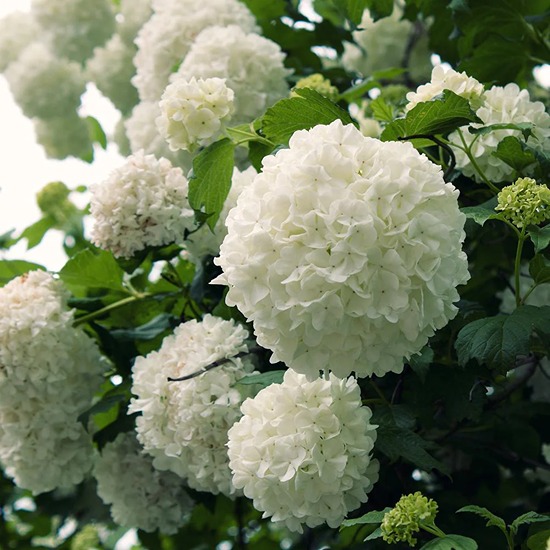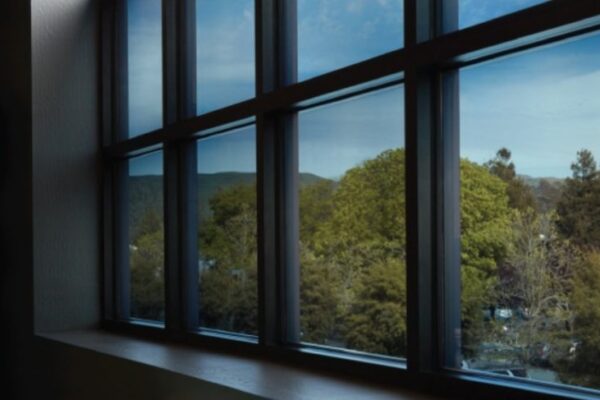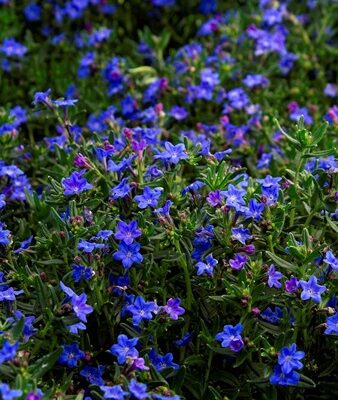11 Powerful Plants in Acidic Soil
In general, plants tend to flourish when they are grown in soils that have a pH level ranging from neutral to slightly below neutral. However, it should be noted that there exist certain plants that have a preference for acidic conditions or have the ability to tolerate acidic soil. The plants in acidic soil require special care and attention to ensure their optimal growth.
Proper soil testing is crucial to determine the suitability of plants in acidic soil before planting them in the garden. Some plants in acidic soil exhibit remarkable adaptability, showcasing their resilience and ability to thrive in challenging environments. These plant types include small flowering perennials, shrubs, ground covers, and even some trees.
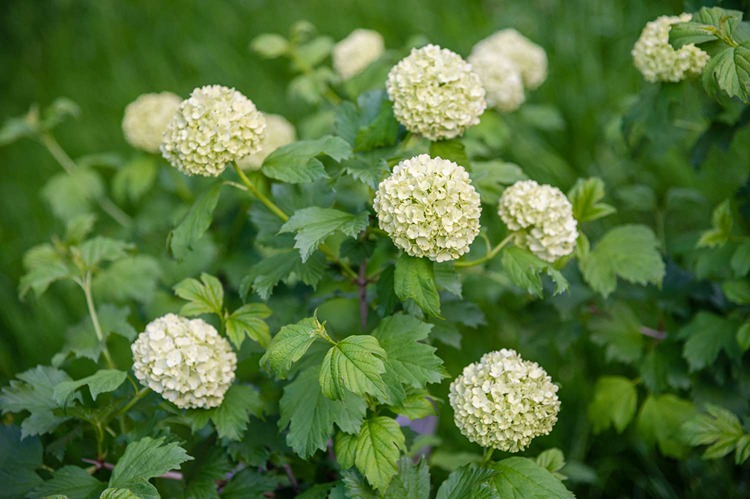
The following list consists of plants that either have the capability to withstand soil pH levels lower than the aforementioned middle ground or actually thrive when grown in soil that falls below this range. Take a look at the selection below to explore various plant species that exhibit optimal growth in acidic soil, ranging from azaleas to holly bushes.
1. Azaleas
Azaleas are a captivating species of flowering shrubs that thrive in shaded areas with acidic soil. Among the many varieties available, Rhododendron x Gable Stewartstonian stands out as one of the most renowned and visually stunning azaleas. However, there are numerous azalea varieties that exhibit a wide array of colors, offering a diverse palette for gardeners to choose from. For those seeking vibrant flowers in the yellow-to-orange spectrum, the ‘Golden Oriole’ variety is a delightful option. Its flower buds possess an orange hue, which then unfurls into magnificent golden blooms.
Azaleas are well-suited for USDA Growing Zones 5 to 8, indicating their adaptability to a range of climates within the United States. The color options of azalea blooms can vary depending on the variety, encompassing shades of pink, white, red, and yellow.
When it comes to sunlight requirements, azaleas thrive in shade to partial sun exposure. They prefer locations with limited direct sunlight, making them an excellent choice for shaded areas in gardens or beneath the canopy of trees.
To ensure optimal growth, azaleas necessitate well-drained soil that has been appropriately amended. This type of soil composition allows for proper drainage while ensuring that the necessary nutrients are available for the shrubs’ development and vibrant blossoms.
By incorporating azaleas into their landscapes, gardeners can enjoy the beauty of these flowering shrubs, which add splashes of color and a touch of elegance to any garden or outdoor space.
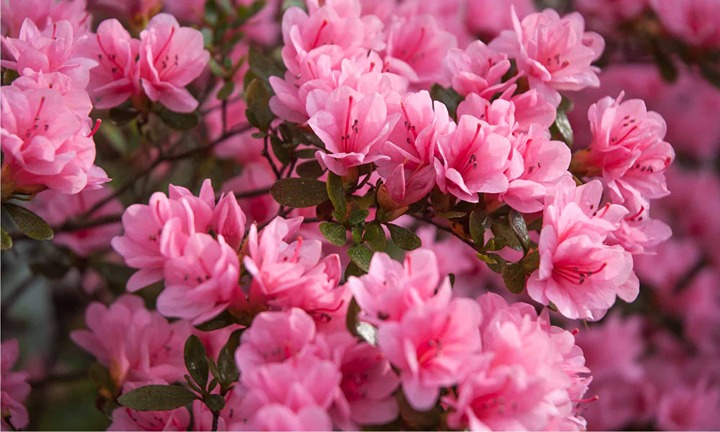
2. Bleeding Heart
The Bleeding Heart plant is highly regarded and sought after for several reasons. Not only does it showcase exquisite heart-shaped blooms, but it also happens to be one of the top choices for perennial plants in shaded areas. A notable advantage of this plant is its ability to thrive in soil that leans towards the acidic side of the pH scale.
When it comes to its preferred growing conditions, the Bleeding Heart plant can be cultivated in USDA Growing Zones ranging from 3 to 9. It exhibits a range of color varieties, including pink, white, and white with cultivar variations. In terms of sunlight exposure, the Bleeding Heart plant can thrive in full shade to partial shade, although it can tolerate some exposure to sunlight.
In order to ensure optimal growth, this plant requires fertile and well-drained soil. By providing these soil conditions, gardeners can help the Bleeding Heart plant flourish and display its captivating blooms in their garden or landscape.
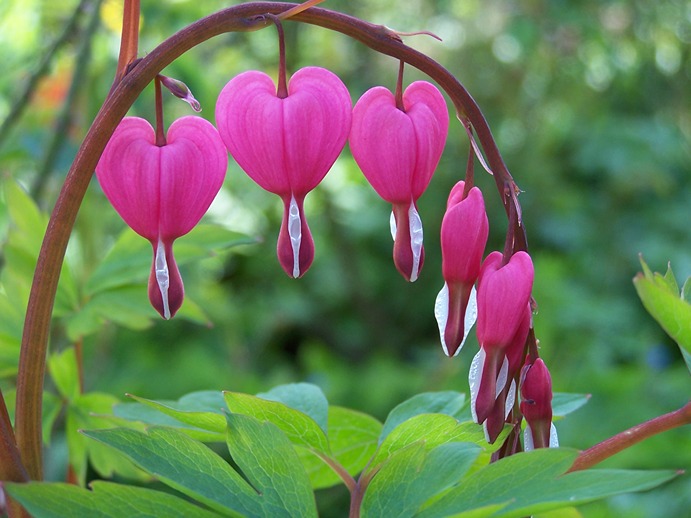
3. Blue Ageratum
Blue Ageratum, also known as flossflower, is an annual flower that belongs to the aster family. This plant is highly valued for its ability to quickly and affordably introduce a vibrant blue hue into any landscape color scheme. Despite its name, blue ageratum is available in various color varieties. While it makes a delightful addition to gardens in warmer climates, it may struggle to thrive in cooler regions.
Blue Ageratum is best suited for USDA Growing Zones 10 or warmer, indicating its preference for tropical or subtropical environments. It showcases an array of color options, including pink, white, purple, lavender, and of course, blue.
When it comes to sunlight exposure, blue ageratum thrives in full sun in northern regions. However, in the southern areas, it prefers partial shade to protect it from the intense heat. This flexibility allows gardeners to find the optimal spot for this vibrant plant based on their specific location.
To ensure the healthy development of blue ageratum, it requires well-drained moist soil that has been enriched with compost. This type of soil composition provides the necessary nutrients and moisture retention for the plant to flourish. By creating these ideal conditions, gardeners can enjoy the beauty of blue ageratum in their landscapes, filling them with bursts of color and charm.
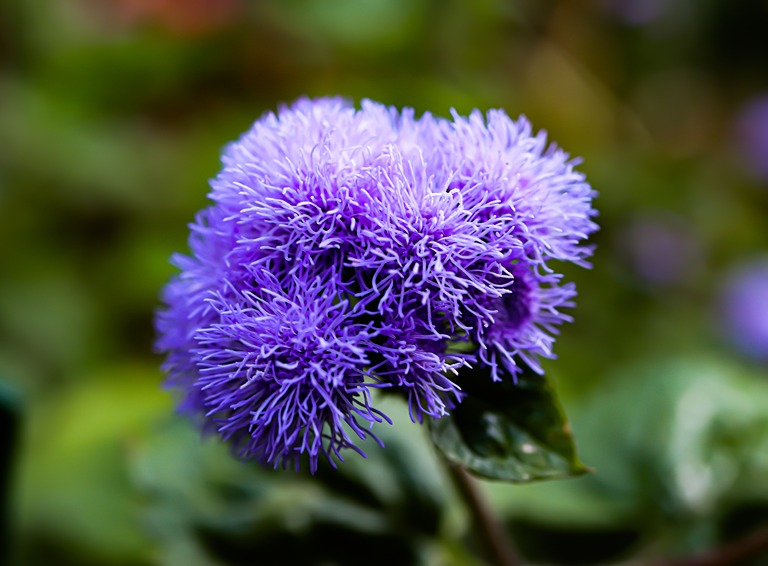
4. Bottlebrush shrubs
Bottlebrush shrubs derive their name from the distinctive shape of their flower clusters, but their remarkable feature lies in their captivating fall color. Like many shrubs renowned for their autumn foliage, bottlebrush shrubs showcase their most vibrant hues when provided with ample sunlight.
Bottlebrush shrubs are well-suited for USDA Growing Zones 5 to 8, indicating their adaptability to a range of climates within the United States. This makes them a suitable choice for gardeners in different regions.
The color variety of bottlebrush shrubs primarily consists of white blooms, which add an elegant touch to any garden or landscape.
When it comes to sunlight requirements, bottlebrush shrubs thrive in full sun to partial shade. While they benefit from abundant sunlight to enhance their fall color display, they can also tolerate some shade, allowing for flexibility in placement within outdoor spaces.
For optimal growth, bottlebrush shrubs prefer moderately moist but well-drained soil. It is essential to provide soil that retains adequate moisture while allowing excess water to drain away effectively. Amending the soil with organic matter further contributes to its overall health and vitality.
The fall color transformation of bottlebrush shrubs adds a captivating spectacle to the landscape, making them a desirable addition to gardens. With their adaptability to different sunlight levels and their preference for moderately moist, well-drained soil, bottlebrush shrubs offer a versatile and visually appealing option for outdoor spaces.
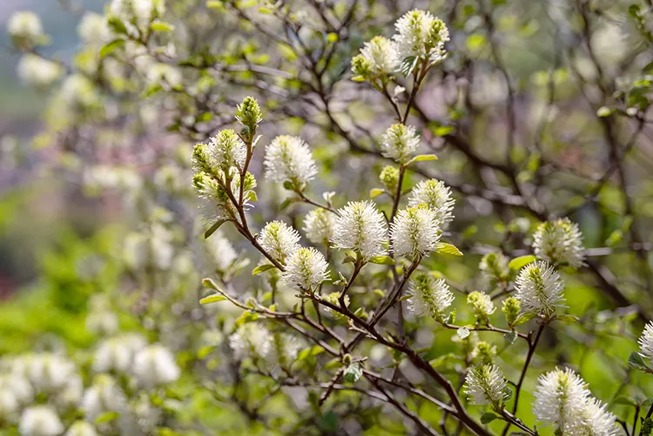
5. Bunchberry
When faced with acidic soil conditions and limited choices for perennial plants, it is worth exploring the realm of native plants as an alternative. In addition to the native ground cover known as bunchberry, there are several acid-loving native plants that thrive in the New England region of the United States. These include Jack-in-the-pulpit (Arisaema triphyllum) and Dutchman’s breeches (Dicentra cucullaria), which is a relative of the bleeding heart plant.
Native to USDA Growing Zones 2 to 7, bunchberry and its companions are well-adapted to a range of climates in the northeastern United States. Bunchberry is particularly notable for its beautiful white color variety.
Regarding sunlight requirements, these native plants prefer shade to partial sun exposure. They thrive in areas with limited direct sunlight, making them suitable for shaded sections of a garden or under the canopy of trees.
In terms of soil needs, moist soil is essential for the successful cultivation of these acid-loving plants. They benefit from a consistently moist soil environment, ensuring they receive the necessary hydration and nutrients for robust growth.
By embracing native plants like bunchberry, Jack-in-the-pulpit, and Dutchman’s breeches, gardeners can expand their choices of perennials in acidic soil conditions, while also supporting the preservation and promotion of local biodiversity.
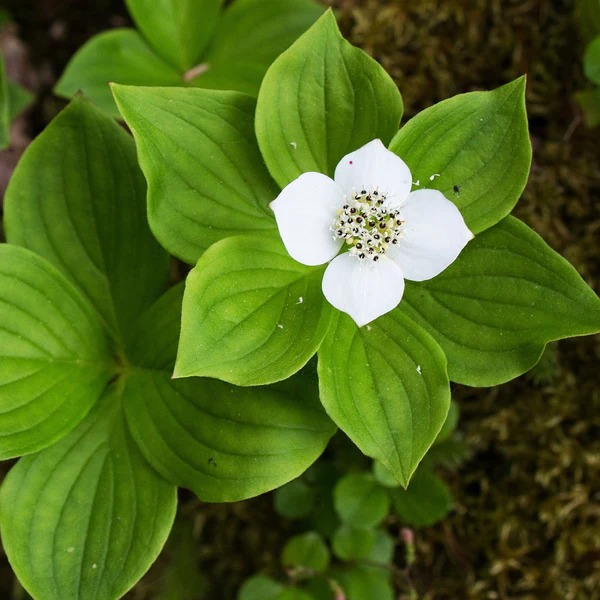
6. Heath
Winter Heath, a prominent member of the heath family, shares a resemblance to heather (Calluna spp.) and serves as the namesake for this plant family. This evergreen shrub is particularly cherished by gardeners for its ability to retain its delicate pink blooms even throughout the winter season, making it a remarkable addition to landscapes in cold regions like New England. This quality makes it an excellent choice for flower beds where the desire is to maintain year-round flowering.
Winter Heath thrives in USDA Growing Zones 5 to 8, indicating its adaptability to a range of climates within the United States. This allows gardeners in various regions to cultivate this beautiful shrub.
The color variety of Winter Heath blooms predominantly includes shades of pink, adding a touch of softness and elegance to any garden or landscape.
In terms of sunlight requirements, Winter Heath flourishes in full sun exposure. It thrives in areas with ample direct sunlight, which allows it to achieve optimal growth and bloom production.
For successful cultivation, Winter Heath requires moist but well-drained soil. This ensures that the plant receives adequate moisture while preventing waterlogging, which can be detrimental to its health. A soil composition that balances moisture retention with proper drainage is essential for the overall well-being of the shrub.
By including Winter Heath in flower beds or gardens, gardeners can enjoy the year-round presence of its delightful pink blooms, adding beauty and vibrancy to outdoor spaces. With its ability to endure colder climates and its stunning floral display, Winter Heath is a remarkable choice for those seeking long-lasting and resilient flowering shrubs.
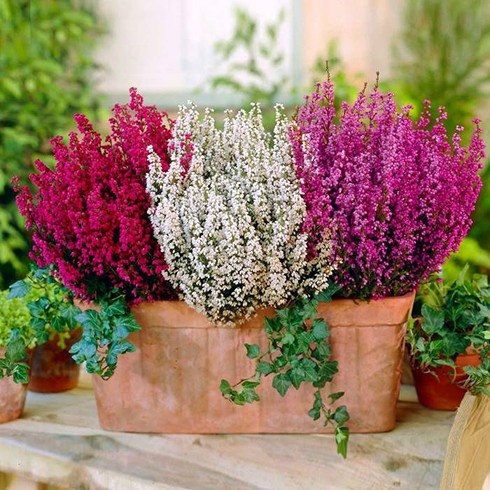
7. Holly plants
Holly plants encompass a diverse range of species, with the majority being shrubs. Although the evergreen holly varieties, like ‘Blue Princess,’ are widely recognized, there are also deciduous types, such as winterberry. In their natural habitat, winterberry and bayberry (Myrica pensylvanica) thrive in similar swampy areas, making them both acid-loving plants.
Holly plants are suitable for USDA Growing Zones 5 to 9, indicating their adaptability to a broad range of climates within the United States. This versatility allows gardeners in various regions to cultivate holly plants successfully.
When it comes to sunlight requirements, holly plants thrive in shade to partial sun exposure. They flourish in areas with limited direct sunlight, making them an excellent choice for shaded sections of gardens or areas under the canopy of trees.
To promote optimal growth, holly plants require well-drained soil. While some holly varieties can tolerate moist soil, ensuring proper drainage is crucial to prevent waterlogging and maintain the health of the plants.
Holly plants are celebrated for their distinct foliage and, in some cases, their vibrant berries, which add beauty and interest to gardens throughout the year. By incorporating holly plants into their landscapes, gardeners can enjoy the evergreen beauty of varieties like ‘Blue Princess’ or the stunning seasonal display of deciduous types like winterberry. With their adaptability to different soil conditions and sunlight levels, holly plants bring a touch of elegance and charm to outdoor spaces.
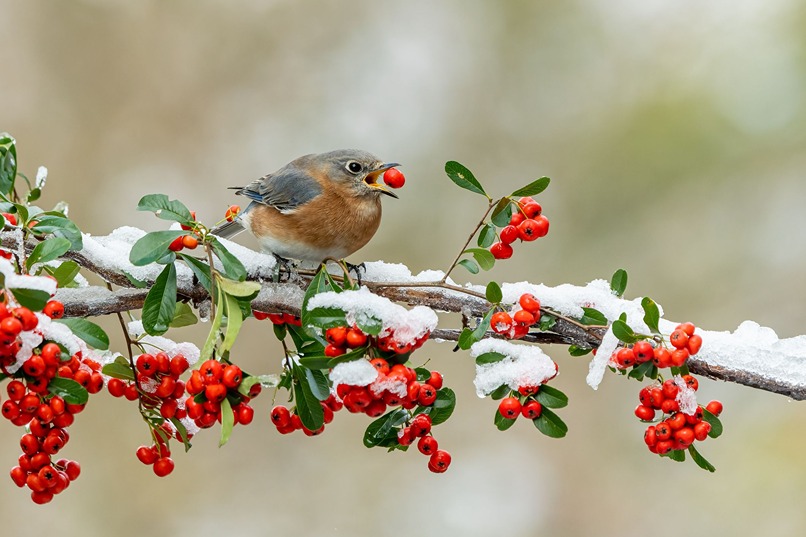
8. Japanese Pachysandra
Japanese Pachysandra is an excellent choice for ground cover in areas with acidic soil. This particular plant is favored in the northeastern region of the United States, primarily due to its deer-resistant qualities. With its wide, dark green, leathery leaves and delicate white flowers that bloom in spring, Japanese Pachysandra adds a touch of beauty to any landscape.
What makes Japanese Pachysandra even more desirable is its resilience and low-maintenance nature. It thrives in areas where many other plants struggle, making it an ideal choice for difficult-to-grow sections of a garden. Once established, Japanese Pachysandra requires minimal care, making it a convenient option for busy gardeners.
Japanese Pachysandra is most suitable for USDA Growing Zones 4 to 8, indicating its adaptability to a range of climates. When it comes to sunlight exposure, it prefers partial to full shade, making it an excellent choice for shady areas under trees or along fences.
To support the healthy growth of Japanese Pachysandra, it is recommended to provide soil enriched with compost. This will help create a nourishing environment for the plant, allowing it to thrive and spread as an attractive ground cover option.

9. Oakleaf Hydrangea
Oakleaf Hydrangea, a well-known variety of hydrangea, offers a unique characteristic in comparison to other types of hydrangeas. While the flower color of most hydrangeas changes based on soil pH, this phenomenon does not apply to the oakleaf hydrangea. However, this North-American native shrub, adorned with white flowers, thrives exceptionally well in acidic soils. Its remarkable performance in such conditions is further complemented by the stunning display of fall foliage.
Oakleaf Hydrangea is ideally suited for USDA Growing Zones 5 to 9, making it adaptable to a wide range of climates within the United States. This allows gardeners in different regions to enjoy the beauty of this shrub.
The color varieties of Oakleaf Hydrangea primarily consist of white or red, depending on the specific variety chosen. Both options bring their own unique charm and visual appeal to garden landscapes.
When it comes to sunlight requirements, Oakleaf Hydrangea flourishes in shade to partial sun exposure. It thrives in areas with limited direct sunlight, making it an excellent choice for shaded sections of gardens or under the canopy of trees.
To promote optimal growth, Oakleaf Hydrangea requires well-drained soil enriched with plenty of compost. This combination ensures proper drainage while providing essential nutrients for the shrub’s development and overall health.
In addition to its beautiful flowers, Oakleaf Hydrangea stands out for its remarkable fall foliage, adding an additional layer of beauty and interest to the landscape.
By incorporating Oakleaf Hydrangea into their gardens, gardeners can appreciate the elegance of its white flowers and the captivating display of fall foliage. With its adaptability to acidic soils and its preference for shaded areas, Oakleaf Hydrangea is a wonderful choice for enhancing outdoor spaces with its unique beauty and seasonal allure.

10. Rhododendrons
When it comes to acid-loving plants, one of the first types that gardeners often think of is the shrubs from the heath family. Among these, Rhododendrons are exceptionally popular in landscaping throughout North America. These shrubs showcase stunning blooms in a variety of colors, making them a favorite choice for adding beauty to outdoor spaces during the spring season.
Rhododendrons are well-suited for USDA Growing Zones 5 to 8, indicating their adaptability to a range of climates within the United States. This makes them a versatile option for gardeners in different regions.
One of the remarkable features of Rhododendrons is their wide range of color varieties. From delicate shades of pink and white to vibrant hues of red and mauve, these shrubs offer an extensive palette of blossoms to suit various preferences and design aesthetics.
Regarding sunlight requirements, Rhododendrons thrive in shade to partial sun exposure. They prefer locations with limited direct sunlight, making them ideal for shaded areas in gardens or beneath the shelter of trees.
To support the optimal growth of Rhododendrons, well-drained soil that has been appropriately amended is essential. This ensures proper drainage while providing the necessary nutrients for the shrubs’ development and abundant blooms.
By incorporating Rhododendrons into their landscapes, gardeners can enjoy the beauty and versatility of these acid-loving shrubs. With their stunning blossoms and adaptability to different climates, Rhododendrons make a remarkable addition to any garden or outdoor space.
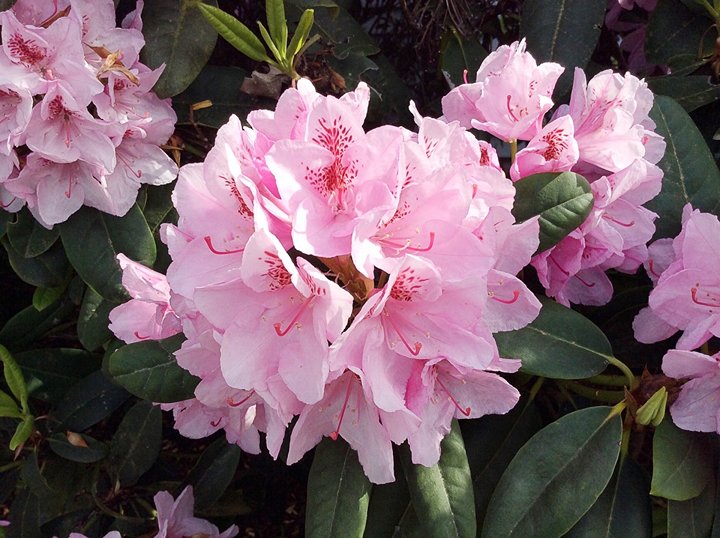
11. Viburnum Bushes
Viburnum bushes are renowned for their appealing flowers, berries, and captivating fall foliage. Among the notable varieties, the doublefile viburnum stands out as an exceptional bloomer for sunny locations. Additionally, Arrowwood viburnum (Viburnum dentatum) and Korean spice viburnum (Viburnum carlesii) offer alternative options with their unique qualities.
Viburnum bushes thrive in USDA Growing Zones 5 to 8, indicating their adaptability to a range of climates within the United States. This allows gardeners in different regions to cultivate these delightful shrubs.
The color variety of viburnum bushes predominantly showcases white flowers, which contribute to their elegant and timeless appeal in gardens and landscapes.
Regarding sunlight requirements, viburnum bushes flourish in full sun to partial shade. While they perform best when provided with ample sunlight, they can also tolerate some shade, offering flexibility in terms of placement within outdoor spaces.
When it comes to soil preferences, viburnum bushes thrive in loam or any medium-moisture, well-drained soil. This ensures a balance between moisture retention and proper drainage, supporting their overall growth and vitality.
The combination of vibrant flowers, ornamental berries, and stunning fall foliage makes viburnum bushes a cherished addition to any garden. With their adaptability to various sunlight levels and their preference for loamy, well-drained soil, these shrubs provide versatility and aesthetic value to outdoor spaces.
